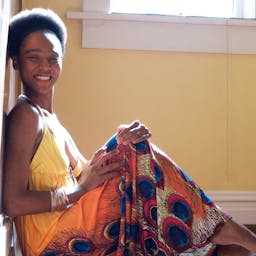Getting to the Root of Afro-Latina Hair
Feb 11, 2021
Story
*originally published: http://newlatina.net/getting-to-the-root-of-afro-latina-hair/
Questioning the Standard
The standard of beauty in the United States is obvious. Most of the supermodels are tall and slender with long, flowing straight hair. This beauty standard is impartial to skin tone: many Caucasian, African-American and Latina models have the same hairstyles regardless of its natural state. As an Afro-Latina, my dark skin and curly hair was not represented around me as beautiful. In a bigger context, Afro-Latinas is not a term specifically for Latina women with dark skin but serves to describe the myriad of skin tones, body structures, features and hair texture that women from an ancestry of indigenous, African and European colonizers come in.
The fixation on hair straightening is clearly seen with the abundance of Dominican hair salons and beauty supply stores that come with memories of living in the Bronx. For 18 years I based what I should strive to look like on the magazines, images of white Latinas on Univision and the messages I absorbed growing up in a low-income community.
It later occurred to me that I was trained to seek my definition of beauty in the world around me. Learning more about the way African hair was destroyed over the course of American history affirmed my choice to grow out my natural hair 8 years ago. It made me want to know more about what Latina and African American women are suppressing with long trips to these salons to apply heat and chemicals to their hair.
The History Behind Our Afro-Latina Hair
The history of how African hair came to be chemically treated starts before lye was applied to the scalp. Our hair is more than the perceived lifeless stuff growing out of our bodies. Hair is a hard fiber protein called keratin. The purpose of hair is for protection, adornment and to shield the head from injury. African hair is structured to give maximum external protection to the brain.
The tightly coiled hair that people of African descent have is described as an evolutionary adaptation to the hot sub-Saharan Africa climate. This hair allowed for more cooling because it keeps the sweat closer to the scalp. The strands of African hair hook to each other. Each hair shaft hooks to adjacent hair shafts and, in turn, the hair then forms a sort of barrier between the African’s scalp and the outside world. From a scientific perspective, it can be concluded that the nature of African hair has a very specific purpose.
Before Africans were enslaved, African hair was worn natural and was very important in West African societies. In various African cultures, the grooming and styling of hair have long been important social rituals. Elaborate hair designs, reflecting tribal affiliation, status, religious leaning and more were common.
Over the process of 400 years, roughly 20 million enslaved Africans were brought across the Atlantic Ocean to the Western Hemisphere, leaving behind families, culture, traditions and the reverence and importance of hair. The enslavement was a deeply traumatizing experience. Slave owners cared very little for enslaved African people’s humanity and culture. Under these harsh conditions, enslaved Africans had no time or desire to groom their hair. Because of this, head rags were often worn for protection from the sun and out of shame for the condition they were forced to have their hair in. After a couple of centuries of harsh treatment and being taught to hate everything about their culture, enslaved Africans found no pride in their hair and a budding interest in hair straightening began.
Straight Hair = An Economic Opportunity & Social Advantage
Straight hair translated to economic opportunity and social advantage. The desire to emulate their White oppressors created division among the enslaved Africans. In the early 1900s, a new image began to emerge among emancipated Africans attempting to assimilate to the White community. Women are commonly used to represent norms and values of a society; therefore, the appearance of African women was essential to the appearance of the race as a whole. This rebuilding of the African women’s image was particularly important given the sexual and physical abuse that was inflicted on women during the enslavement.
The first version of hair relaxers were used by men. It was a caustic solution of potatoes, eggs and lye called “conk.” Today’s relaxers are more sophisticated than this early version. They contain various chemicals that make the hair straightening process less scathing but still have lye as the active ingredient. Scientifically, lye is sodium hydroxide. It is used in soap making, biodiesel production, and household cleaners such as oven cleaner and drain opener. Sodium hydroxide is not safe for human beings to inhale, as it can potentially cause lung damage. The prolonged used of relaxers causes hardened scalp tissue and hair loss.
The 1960s came with a surge in Black Nationalist thought. Hair at this point was desired to be in its most natural state, which in turn led to a stronger identification with the African homeland. This new way of defining beauty was revolutionary. Many African-American and Latina women still relax their hair to this day. There remain a considerable number of hair salons in many U.S urban communities. Afros still remain visible in the African community, along with braids, cornrows and dreadlocks, as we see a resurgence of Afro-descendant people getting in touch with their African ancestry. Although most of us can agree that the way you wear your hair is not an automatic indication of how culturally aware you are, knowing that our hair-styling and beauty practices stem from a turbulent history can give us more insight as to why our community still subscribes to these beliefs.




